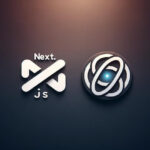Embark on a transformative learning journey with our comprehensive video course, “Next JS: The Complete Developer’s Guide.” Dive deep into the world of Next.js as we guide you through over 30 hours of engaging video content, carefully crafted to empower developers at every skill level.
We ensure that you have a thorough understanding of Next.js by covering everything in this extensive course, from the fundamentals to more complex subjects. Discover the concepts of dynamic routing, server-side rendering, and an API connection, and see directly how these ideas work together to build reliable and effective online services. With the theoretical knowledge and practical insights our in-depth courses offer, you may construct your projects with confidence.
Whether you’re a novice looking for a solid foundation or an experienced developer looking to sharpen your skills, this course is intended for developers of all skill levels. Obtain a competitive edge in the always changing web development market, remain up to date on industry trends, and consult professionals for optimization and performance tuning.
Table of Contents
Join us on this educational odyssey and unlock the secrets of building scalable, performant, and dynamic web applications. Transform your coding proficiency and stay ahead in the ever-evolving landscape of web development. Enroll now, and let your journey to mastering Next.js begin!
What You Will Learn The Complete Developer’s Guide:
- Create highly performant web applications using Next.js
- Understand the distinctions between running Next.js in development and production environments
- Employ four different caching systems to enhance request response times
- Utilize the latest React technologies, including Server Components, to develop streaming interfaces
- Implement secure user authentication using the Next Auth library
- Construct complex routing structures through route interception and parallel routing
- Automatically update and refresh data with Server Actions and Revalidation
- Optimize image fetching and loading with Next.js’s Image component
- Enhance form validation and handling by integrating React’s new useFormState hook.
Course Content of The Complete Developer’s Guide
1. Get Started Here!
- How to Learn NextJS Quickly
- Project Overview
- File-Based Routing
- Adding Additional Routes
- Linking Between Pages
- Common IJI with Layouts
- Project Structure Strategy
- Absolute Path Import Shortcut
- Image Files
- Adding Images
- More on the Image Component
- Adding a Reusable Presentation Component
- Adding Some Styling
- Production Deployment with Vercel
- Join Our Community!
- Course Diagrams
2. Changing Data with Mutations The Complete Developer’s Guide
- App Overview
- Project Setup
- Adding a Create Page
- Creating a Prisma Client
- Adding a Creation Form
3. Streaming Content with React Server Components
- Introducing Server Actions
- A Deeper Dive into Server Actions
- Server Components vs Client Components
- Fetching Data with Server Components
- Adding Dynamic Paths
- Fetching Particular Records
- Custom Not Found Pages
- Automatic Loading Spinnners
- A Few Quick Tasks
- Styling the Show Page
- Linking to the Edit Page
- Showing a Client Component in a Server Component
- Adding the Monaco Editor
- Handling Editor Changes
4. Server Actions in Great Detail
- Server Actions in Client Components
- Server Actions in a Separate File
- Options for Calling Server Actions from Client Components
- Calling a Server Action from a Client Component
- Deleting a Record with a Server Action
5. Server Forms with the UseFormState Hook
- Understanding the UseFormState Hook
- UseForm State in Action
- Adding the Form Validation
- Gotchas Around Error Handling
6. Understanding Next’s Caching System
- Super Unexpected Behavior
- The Full Route Cache System
- What Makes a Static or Dynamic Route
- When to Use Each Cache Control
- Help, My Page is Showing Old Data!
- Enabling Caching with GenerateStaticParams
- Caching Dynamic Routes
7. Authentication with Next-Auth
- Project Overview
- Critical Libraries in Our Project
- NextUl Installation and Setup
- Prisma Schema File
- Database Setup
- OAuth Setup
- Next-Auth Setup
- The Theory Behind OAuth
- Wrapping Auth in Server Actions
- Sign In, Sign out, and Checking Auth Status
- Upfront Design Process
- Why Path Helpers?
- Path Helper Implementation
- Creating the Routing Structure
- Stubbing Out Server Actions
- Planning Revalidating Strategies
- Building the Header
- Displaying the Sign In and Sign Out Buttons
- Enabling Sign Out
- More Caching Issues
- Static Caching While Using Auth
- Creating Topics
- Creating a Popover Form
- Receiving Form Data
- Adding Form Validation with Zod
- Reminder on the UseFormState Hook
- Fixing UseFormState Type Errors
- Here’s Our FormState Type
- Displaying Validation Errors
- Handling General Form Errors
- Handling Database Errors in Forms
8. Using Data – Database Queries
- Showing Loading Spinners with UseFormStatus
- Fetching and Listing Content from Prisma
- Scaffolding the Topic Show Page
- Displaying a Creation Form
- Applying Validation to Post Creation
- Checking Authentication Status
- Passing Additional Args to a Server Action
- Creating the Record
- A Few Project Files
- Merging a Few Files
- Considerations Around Where to Fetch Data
- Data Fetching in Child Components
- Recommended Data Fetching
- Define in Parent, Fetch in Child
- Alternative Type Names and Query Definitions
- Don’t Go Crazy With Reuse
- Comment Creation
- Recursively Rendering Components
- Fetching the Big List
9. Caching with Request Memoization
- Multiple Repeated DB Queries
- Introducing Duplicate Queries
- Request Memoization
- Deduplicating Requests with Cache
10. Implementing Search Functionality
- Adding in Component Streaming
- Streaming with Suspense
- Adding a Loading Skeleton
- Top Posts on the HomePage
- Back to the Search Input
- Notes on QueryStrings in Next
- Accessing the Query String
- Redirecting From a Server Action
- Receiving the Query String in a Server Component
- Running the Search
- The De-Opt to Client Side Rendering Warning
- Wrap Up!
11. Supplement – React Primer
- A Note About the Following Lectures
- Let’s Build an App!
- Critical Questions
- A Few More Critical Questions
- Node Setup
- Creating a React Project
- What is Create React App
- Showing Basic Content
- What is JSX?
- Printing JavaScript Variables in JSX
- Shorthand JSX Expressions
- Typical Component Layouts
- Customizing Elements with Props
- Converting HTML to JSX
- Applying Styling in JSX
- Extracting Components
- Module Systems Overview
- Cheatsheet for JSX
- Project Overview
- Creating Core Components
- Introducing the Props Systems
- Picturing the Movement of Data
- Adding Props
- Using Argument Destructuring
- React Developer Tools
- Most Common Props Mistake
- Images for the App
- Including Images
- Handling Image Accessibility
- Review on How CSS Works
- Adding CSS Libraries with NPM
- A Big Pile of HTML!
- Last Bit of Styling
12. Supplement – TypeScript Primer
- A Note About the Following Lectures
- TypeScript Overview
- Environment Setup
- A First App The Complete Developer’s Guide
- Executing TypeScript Code
- One Quick Change
- Catching Errors with TypeScript
- Catching More Errors!
- Types
- More on Types
- Examples of Types
- Where Do We Use Types
- Type Annotations and Inference
- Annotations with Variables
- Object Literal Annotations
- Annotations Around Functions
13. Understanding Inference
- The “Any” Type
- Fixing the “Any” Type
- Delayed Initialization
- When Inference Doesn’t Work
- More on Annotations Around Functions
- Inference Around Functions
- Annotations for Anonymous Functions
- Void and Never
- Destructuring with Annotations
- Annotations Around Objects
- Arrays in TypeScript
- Why Typed Arrays?
- Multiple Types in Arrays
- When to Use Typed Arrays
- Tuples in TypeScript
- Tuples in Action
- Tuples in TypeScript
- Tuples in Action
- Why Tuples?
- Interfaces
- Long Type Annotations
- Fixing Annotations with Interfaces
- Syntax Around Interfaces
- Functions in Interfaces
- Code Reuse with Interfaces
- General Plan with Interfaces
14. Bonus!
- Bonus! The Complete Developer’s Guide
Requirements for This Course:
- Familiarity with React and Typescript is beneficial.
- Refresher sections on React and Typescript are incorporated to assist learners.”
Target Audience for This Course:
- Engineers aspiring to develop high-performance web applications using Next.js.
Does the course make sense for first-timers?
Definitely! Our course offers a systematic learning route for developers of all expertise levels, accommodating both novices and experts.
Are there practical examples included The Complete Developer’s Guide?
Yes, the course includes hands-on examples and real-world applications to reinforce your understanding of Next JS.
How often is the course updated?
We are committed to providing the latest insights. Expect continuous updates to keep you abreast of the evolving Next JS landscape.
Free Join us on “howtofree.org” and embark on your journey tobecoming a proficient developer with “The CompleteDeveloper’s Guide” — where education meets empowerment.
File Info:
Last Update: 04/2023
File Download Method: Fast Direct Server
File Size: 5GB (apporx)Wait 15 Second For Download This File For Free
Author : https://www.udemy.com/course/next-js-the-complete-developers-guide/
if you find any wrong activities so kindly read our DMCA policy also contact us. Thank you for understand us…











Thanks a lot,can you provide also the missing parts